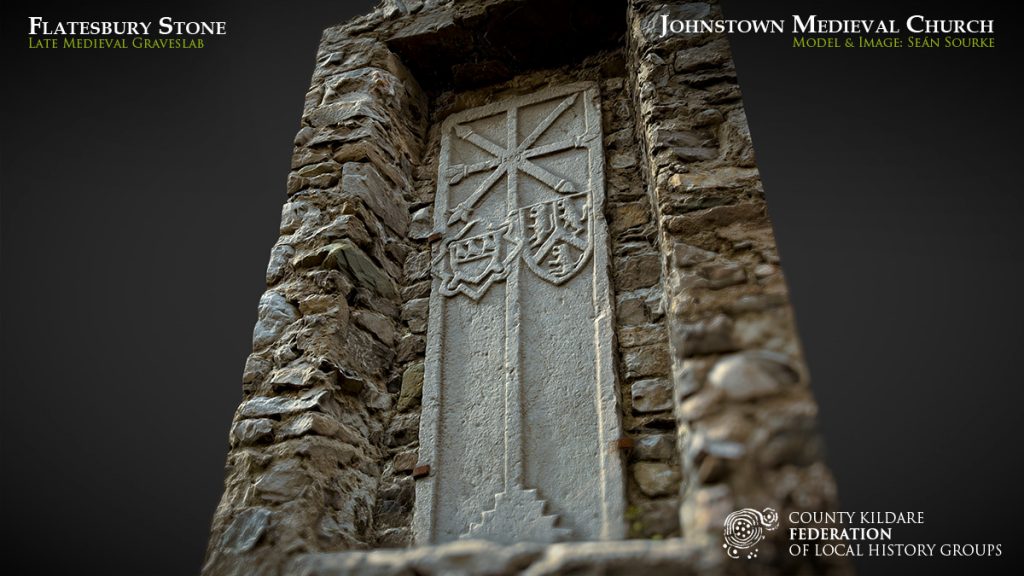History of Johnstown
Evidence of human activity around the area in the earliest times can be found from the ‘holed’ stone standing in a field at the southern end of the village. This stone has now been found to be astronomically aligned to the mid-summer solistice.
The village at Johnstown probably grew up between the river, where there was an early ford, and the site of the old church, which was founded by the medieval order of the Knights Hospitallers of St John of Jerusalem – whose regional headquarters [Commandery] was at nearby Kilteel, and who had an abbey in Naas.
During the Middle Ages, Johnstown was associated with the Flatsbury family, whose name first crops up in Kildare in the 13th century. The family were an influential one – with members being appointed as Collectors of the Kings Revenue and acting as Sherriffs of Kildare, and even members of Parliament, between the 14th and 16th centuries.
The old graveyard at Johnstown contains a number of fragments, including the octagonal base of a medieval baptismal font, and a flat stone slab with carved coats of arms representing the Wogan and Flatsbury families. This has been taken to be the grave slab of James Flatsbury who married Eleanor Wogan in 1436.

Another famous member of the family was Philip Flatsbury, a scholar and scribe who compiled, in 1503, “The Red Book of Kildare” for Garret ‘Og’ Fitzgerald, the 9th Earl of Kildare. This book, which contains lists of documents relating to the Fitzgerald estates (including grants and title deeds) went missing after the Rebellion of ‘Silken Thomas’ the 10th Earl, but is today in the possession of Trinity College Dublin.
After the Rebellion of 1641 the lands around Johnstown and Palmerstown were confiscated from the Flatsburys and granted to a west of Ireland family called Bourke who went on to become part of the British establishment, acquiring the titles of Lord Naas and, ultimately, Earl of Mayo. The family held many Crown offices with, perhaps, its most famous member being the 6th Earl, Richard Southwell Bourke who was appointed Chief Secretary of Ireland on three occasions in the 1860s and, finally, Viceroy of India, where he was assassinated in 1872. He is buried, under a celtic cross, in the centre of the old graveyard in the village.
